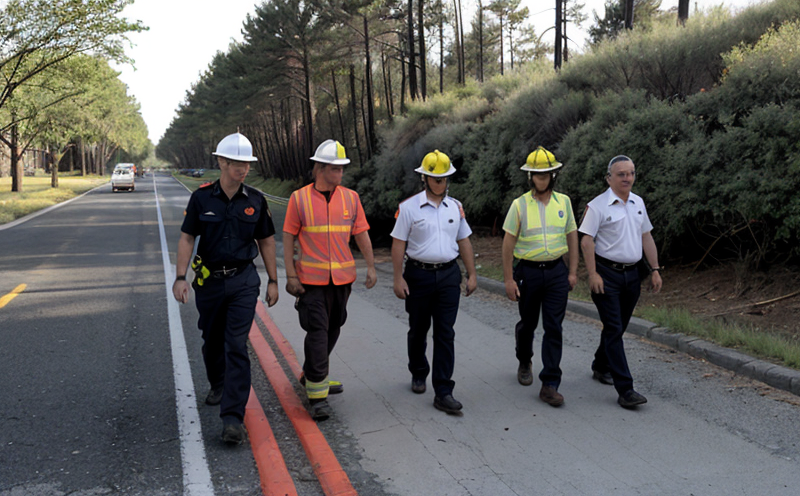Fire evacuation route inspection
The Fire Evacuation Route Inspection is a critical component of Environmental Health and Safety (EHS) protocols designed to ensure the safety of individuals in case of emergencies. This service involves detailed assessment, verification, and documentation of all fire evacuation routes within an organization's premises. The goal is to identify any potential hazards or deficiencies that could impede safe evacuation during a fire emergency.
The inspection process begins with a thorough walkthrough of each identified evacuation route, which includes stairs, corridors, exits, and assembly points. This initial step ensures visibility of all areas involved in the evacuation plan. Following this, we conduct a visual assessment for any physical obstructions such as furniture or debris that might hinder swift movement during an emergency.
Temperature checks are performed on doors leading to exit routes to ensure they remain functional and unobstructed at all times. Additionally, fire alarms and emergency lighting systems are tested regularly to confirm their operational integrity. This includes checking for proper wiring, battery life, and signal transmission capabilities.
The inspection also covers the condition of exit signage along with regular testing of these signs to ensure they comply with international standards like ISO 7013:2016, which specifies requirements for emergency route signs in buildings. Compliance with such standards is crucial as it ensures that all personnel can quickly identify and follow correct evacuation routes during an actual incident.
For more complex environments, we employ advanced imaging techniques using infrared cameras to detect heat signatures around fire exits, helping locate any areas where insulation has been compromised over time. Furthermore, we analyze the design of the building itself, focusing on factors such as width of corridors and stairwells, which directly impact the speed at which people can evacuate.
In addition to physical checks, we also review emergency procedures documented by your organization. This includes evaluating fire drills conducted previously and assessing how effectively they were executed based on feedback provided afterwards. By comparing these records against current best practices outlined in relevant regulations like OSHA 1910.38, we can recommend improvements needed for future drills.
Our team uses state-of-the-art equipment to measure smoke levels at various points along the evacuation routes using devices compliant with ASTM E264 - Standard Test Method for Determination of Available Carbon Oxide (CO) in Simulated Fire烟





